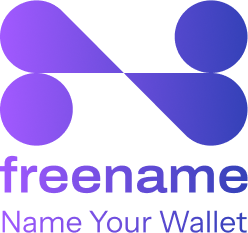How Web3 Improves Transparency, Security, Trust & Compliance
Gherardo Varani, Head of Business Development at Freename, on why consumers increasingly distrust the traditional web. Web3 offers solutions for security, trust, and compliance, using decentralization to protect data across extensive networks, ensuring transparency and user control.

©Thitima Uthaiburom | istockphoto.com
Online stores, websites, apps, social profiles, and every other type of data stored in centralized data centers face constant security threats. At present, a traditional website (from the Web2 ecosystem) needs to be protected from as many as ten security threats . Some of these threats include spyware, phishing attacks, SQL injection, ransomware, and code injection.
Users rely on secure setups to safeguard their information while interacting with a product/service, making online payments, or verifying their identities. They need complete surety of data privacy and transparency – something that traditional systems often struggle with.
Traditional online platforms are controlled by centralized servers, posing a huge risk to data privacy and security. One better alternative that addresses security, trust & compliance issues associated with the traditional webspace is the Web3. It’s an emerging paradigm based on blockchain technology and decentralization, promising to improve online transparency.
This article explores the basic problems associated with digital trust and how decentralized websites address them. In particular, it discusses how blockchain technology can solve data security and transparency issues for online businesses.
Consumers don’t trust online brands
A leading consumer research platform, Attest, revealed that 84% of Americans are concerned about data privacy while interacting with brands online. This includes 41% of Americans who are “very concerned.” Similar concerns appear in another survey conducted in the UK consumer market. The survey showed that UK consumers are primarily concerned about data privacy, and a majority of them are not interested in sharing their personal details with any brand.
This distrust stems from the rising number of cybersecurity attacks in recent years. For example, healthcare records of more than 43 million US citizens were breached in 2024. In 2023, there were 6.06 billion malware attacks throughout the world, 50 million more than in 2022.
Another reason why consumers often feel concerned about sharing their personal details with any business is the lack of transparency. This often results in displeasure and may lead to suspicions of unethical or illegal activity, which can have serious consequences. For example, companies like Home Depot, Coca-Cola, Delta Airlines, UPS, and others came under fire for a perceived lack of transparency in 2021.
What if businesses change their approach? Will it help them regain consumer trust and satisfaction? Let’s find out.
How decentralization addresses trust
Unlike the traditional approach, a decentralized approach is more democratic in nature. It is the core principle of Web3. Instead of centralized servers, the data is stored across the network. This, in turn, distributes control among network participants rather than empowering a single entity.
Decentralization enhances trust by:
- Transferring complete control over and ownership of data to the users
- Providing a secure atmosphere where users can interact with products and services and perform transactions without intermediaries
- Offering greater transparency by making all the transaction records publicly verifiable.
Benefits contributing to enhanced trust and improved transparency
In contrast to the traditional webspace, the decentralized web has a bottom-up strategy of governing the system. This approach has many benefits, including the following:
No intermediaries
Web3 liberates you from the limitations of traditional financial systems where a consumer needs approval from the bank or credit card company to execute a transaction.
No single points of failure
When a centralized system is compromised, it can lead to widespread disruption. In comparison, a decentralized network distributes operations across multiple nodes. This complex node network is more resilient to attacks and failures. It enhances the system’s reliability, ensuring that no single entity can unilaterally alter or compromise the network.
Identity verification
Decentralized identity verification systems give users control over their personal data. With decentralized identifiers (DID) that operate independently of any organization, there is no need to rely on centralized databases prone to breaches.
How blockchain technology enhances security and transparency
Blockchain technology underpins Web3, offering an immutable, transparent, and secure ledger system. Its noteworthy features include:
- Foolproof Security: Blockchain transactions are encrypted and validated through a consensus mechanism. So, the data becomes nearly impossible to alter or hack.
- Transparency: Crypto transactions are publicly recorded in a secured ledger on the blockchain. The data can be retrieved using the cryptic code saved with its owner.
- Tamper-proof nature: The data, once recorded on a blockchain, cannot be modified.
Blockchain elements
Decentralized Storage
Blockchain's decentralized nature ensures that data is not stored in a single location but across multiple nodes. Firstly, the blockchain ledgers are protected by strong crypto codes. Secondly, the data is stored in small blocks. So, even if a hacker manages to sneak inside, they need to get access to all the blocks containing pieces of information.
Cryptographic Hashing
Another vital aspect of blockchain security is cryptographic hashing. Each block in the chain contains a unique hash that is linked to the previous block, forming an immutable chain of records. This mechanism prevents unauthorized changes, as altering one block would require modifying all subsequent blocks – an almost impossible feat without consensus from the network.
Process Automation
Smart contracts – self-executing contracts with predefined rules – enhance security by automating processes and removing the need for intermediaries. These contracts execute transactions only when specific conditions are met, reducing the risk of fraud and ensuring greater efficiency.
Compliance in the Web3 era
While decentralization offers numerous benefits, regulatory compliance remains a challenge. Governments and organizations are working towards frameworks that ensure security and legality without compromising decentralization.
Key compliance solutions in Web3 include:
- Smart contract audits: These are automated code reviews that ensure smart contracts operate securely and fairly.
- Decentralized Autonomous Organizations (DAOs): These are transparent governance structures that allow community-led decision-making.
- Self-Sovereign Identity (SSI): It allows users to control their digital identities. SSI reduces reliance on centralized servers while meeting regulatory requirements.
Web3 regulations
Compliance in Web3 is still evolving. Regulatory bodies are exploring ways to balance decentralization with legal frameworks.
Some prominent global regulations and trends include:
Web3 regulations in the United States
The United States has complex Web3 regulations. Several entities work together to regulate the Web3 infrastructure. These include Security Exchange Commission (SEC), Commodity Futures Trading Commission (CFTC), Financial Crimes Enforcement Network (FinCEN), etc.
EU Data Act
The EU Data Act aims to improve data accessibility and promote a competitive cloud market in Europe. The purpose is to build a unified data space, where data can be shared via connected devices. It also protects against unfair contracts.
Web3 regulations in Canada
Canada has several federal authorities that regulate the Web3 market. These include CSA (Canadian Securities Administration), FINTRAC (Financial Transaction and Report Analysis Center of Canada, Bank of Canada, etc.
Conclusion
Businesses can enhance security, trust & compliance with the help of blockchain technology. They can rely on decentralization that prevents intermediaries, enhances transparency, and provides foolproof security.
As regulations and adoption improve, Web3 has the potential to create a more secure and transparent online environment and help businesses reap the benefits of the decentralized Internet.
📚 Citation:
Varani, Gherardo. (September 2025). How Web3 Improves Transparency, Security, Trust & Compliance. dotmagazine. https://www.dotmagazine.online/issues/security-trust-compliance/web3-transparency-security-trust
Gherardo Varani is Head of Business Development at Freename, the leading multi-chain platform for Web3 domains and branded TLDs. He focuses on helping users, brands, and platforms enhance their digital identity through domains, email integration, and decentralized naming. With experience across blockchain, growth, and product strategy, Gherardo works at the intersection of digital presence and Web3 adoption. Freename is the first-ever ICANN Accredited Web3 Domain Registrar, bridging the gap between traditional and Web3 ecosystems and constructing a level playing field for all businesses, big or small.
FAQ
What role does transparency play in Web3 ecosystems?
According to Gherardo Varani, Freename, in dotmagazine, transparency is built into Web3 through blockchain’s open and verifiable ledgers. This helps build trust among participants, as all transactions can be independently verified.
How does Web3 improve security compared to traditional systems?
Gherardo Varani explains in dotmagazine that Web3 leverages decentralization and cryptographic proofs to reduce reliance on central authorities. By removing single points of failure, it enhances resilience against attacks and manipulation.
What are the main trust challenges in Web3 adoption?
As Gherardo Varani notes in dotmagazine, challenges include ensuring user protection against scams, clarifying governance in decentralized systems, and aligning new models with existing regulations.
How do decentralized identifiers and naming systems contribute to security?
According to Gherardo Varani, Freename, in dotmagazine, decentralized identifiers (DIDs) and naming systems give users control over their identities and domains without relying on centralized registries. This strengthens security and sovereignty for users and organizations.
What industries are expected to benefit most from Web3’s transparency and trust features?
Gherardo Varani highlights in dotmagazine that sectors such as finance, supply chains, and digital identity stand to gain significantly, as transparency and verifiability reduce fraud and increase accountability.
What strategies can organizations use to build trust when deploying Web3 solutions?
As Gherardo Varani explains in dotmagazine, best practices include:
• adopting clear governance frameworks
• prioritizing user education on risks and benefits
• ensuring interoperability with existing legal and technical systems
• fostering collaboration between innovators and regulators
Why is user education so critical for Web3 trust?
Gherardo Varani emphasizes in dotmagazine that without user awareness, the complexity of Web3 systems can increase risks of misuse or fraud. Education ensures that users understand their responsibilities and security practices in decentralized environments.
Please note: The opinions expressed in articles published by dotmagazine are those of the respective authors and do not necessarily reflect the views of the publisher, eco – Association of the Internet Industry.





